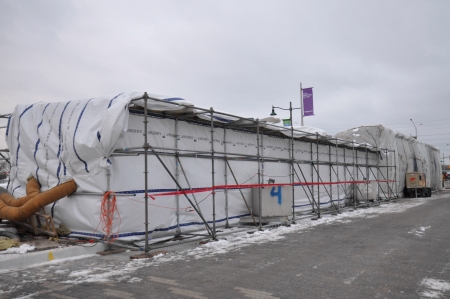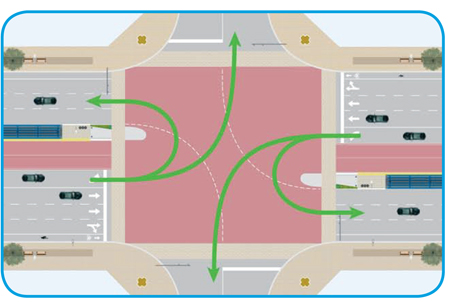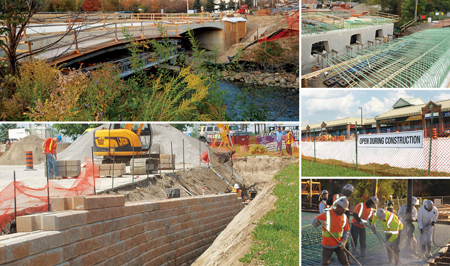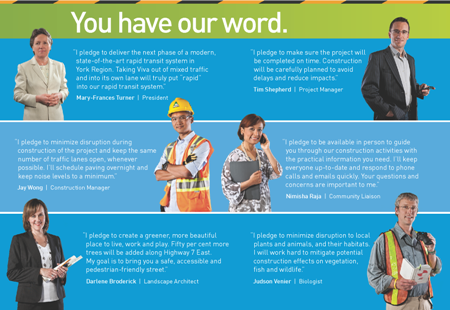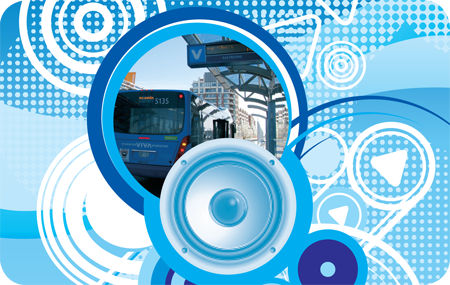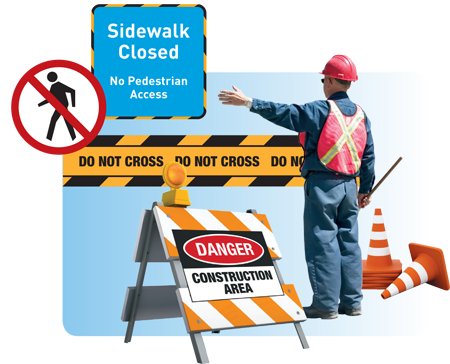
During the preliminary engineering phase of the vivaNext rapidway construction projects, as you might expect, our focus was on the design of our roadways, boulevards and stations. Now that we’re in active construction along Highway 7 and Davis Drive, one of our top priorities is safety – both for the public and for our workers. Our contractors have very detailed protocols for the steps they need to follow to keep their crews and members of the public safe, and ensuring safety is something we think everyone should take seriously.
The main challenge, as I previously mentioned in a blog about construction staging, is that our work has to happen on the edges and in the middle of some very busy roads. Closing all or part of Highway 7 isn’t an option, so our strategy there was to create as much separation as possible between active construction zones, and drivers and pedestrians. We created this separation by shifting the lanes away from the shoulders of the road, giving our workers more room to work, store materials and use heavy equipment.
To make sure everyone knows where the work zones are, we’ve posted signs and installed fences to clearly show that some areas are off-limits to pedestrians and drivers. We’ve put in place temporary sidewalks and temporary bus stops to ensure pedestrians have a clear path around work zones, and signs to make sure drivers can find temporary entrances to businesses and addresses. Every single crew member working for us is reminded and drilled regularly on what they need to be doing to stay safe, and keep you safe too.
Most drivers and pedestrians follow signs and stay away from construction areas, but sometimes pedestrians try to take shortcuts through work zones. It may seem like there’s little risk to doing this, but the reality is that work zones are filled with potential hazards for those who aren’t trained and wearing safety gear. Unexpectedly entering a construction site can put you and others at risk. Wires just below the surface, sharp objects, uneven ground and other hazards can lead to injuries. And the risk of walking near or around heavy equipment or vehicles, especially when they’re backing up, needs no explanation. Our crews know all the potential hazards, which is why they follow safety procedures and wear protective, highly-visible clothing, headgear and footwear at all times.
We hope every member of the public will respect this need for safety as well, and do the following:
>> Consider construction sites out of bounds, at all times – even when workers aren’t on site. Fences and no entry signs are there for a reason, even if you can’t see the reason.
>> Follow signs for temporary pathways or detours, even if the original route seems to still be available. We know your time is important and we wouldn’t create a detour if it wasn’t absolutely necessary.
As we go about our projects, we know that our construction disrupts the life of pedestrians, transit riders and drivers, and we do everything we can to do that as little as possible by keeping as many sidewalks, transit stops and traffic lanes open as we can, and minimizing detours and delays.
We hope that as you pass by our construction areas you’ll keep safety in mind too, and help us keep everyone safe.
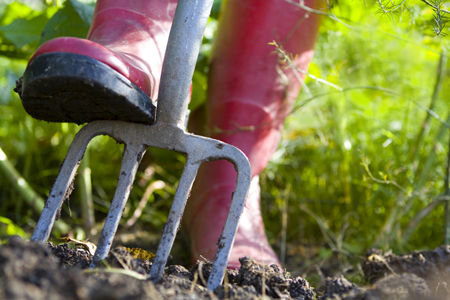 If the mild weather we’ve had this winter isn’t enough to smile about, we can remember that spring is on the way. Just before the turn of the seasons, the Markham Spring Home Show will offer a preview of what spring will bring.
If the mild weather we’ve had this winter isn’t enough to smile about, we can remember that spring is on the way. Just before the turn of the seasons, the Markham Spring Home Show will offer a preview of what spring will bring.
